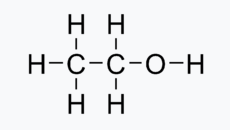
A bath in fermented saw dust: Fermentation and nutrition
Internet news reports about a Kabuki star, Ebizo’s daily life, which includes taking a bath in fermented saw dust with his children. Because of this, fermented baths in saw dust have become very popular everywhere in Japan particularly in Tokyo and Osaka. They originated about 40 years ago in Hokkaido. Here in Awaji one bath facility with fermented saw dust is well known(http://sun-sun33.com/). It was built as a renovation of an old farming factory. PASONA group started this type of bath last year, which is offered in a special program orienting to a healthy life at the glamping site, Grand Chariot. In the program, special dishes, several exercises, and lectures on topics regarding wellness of health are offered for people who are concerned with metabolic syndromes like high blood pressure and diabetes. This program is based on the personal experience of Mr. Yasuyuki Nambu, Founder and CEO of PASONA Group(https://www.nambuyasuyuki.com/news/2020/07/3072/). The whole program has been arranged in detail by Mr. Nambu himself, collaborating with advisory medical doctors. Meals in the program are vegan style with a lot of vegetables and very tasty original dressing made by a famous chef, Mr. Fushiki(https://www.chef-fushiki.jp/). He is well known for his original cuisine with traditional Japanese seasoning, miso and soy sauce. Miso and soy sauce are products created through the fermentation process.


Bathing in saw dust is done at temperatures between around 48 and 60 degrees. Taking bath is well known for its positive effects on our health in Japan. Many hospitals healing methods are based on taking a bath at a hot-spring and are very popular. Fermentation is a key word not only for bathing but also for our health through fermentation products, like miso and soy sauce. Here, let’s see a more detailed explanation of heat by fermentation, and positive effects of fermentation products on our health.
Agricultural disposals like straw mulching for animals are renewed as barnyard manure. To make barnyard manure, heat is produced which is important to kill hazardous bacteria. This heat is created by fermentation with natural micro-organisms in the disposals. Heat by such fermentation sometimes causes even fire in nature(N.Muraswa et al.,Bull. Japanese Association for the fire science and engineering (2012) 62). Such things tell us that heat created by fermentation is quite high. How hot is the heat caused by fermentation? According to an experimental result using bran, discarded bamboo tips and/or sew dust as a heating source, temperature increases up to average amount of 50 degrees, maximally up to 68 degrees. A bath in sew dust heats up by mixing bran and/or sew dust with yeast, salts and water. In the experiment shown above continuous incubation causes decrease of temperature; i.e., occasional mixing with supply of air (oxygen), together with a supply of new sew dust and/or bran as an energy source is required to keep a higher temperature. This indicates that yeast needs oxygen to produce a higher temperature. As shown here heating by fermentation is very effective eco-system without using gas or electricity. A research group reported that heat by fermentation using home-compost can generate electricity. We need to look forward to know the consequence or opportunity.

Fermentation is a process by which micro-organisms obtain their energy from sugars, getting ATP as an energy storage molecule. As a result of fermentation, alcohol, vinegar, etc. are also produced as by-products. The biochemical process of fermentation is a complex system, composed of many chemical reactions to degrade sugars. Each chemical-reaction is heat producing. In all such reactions, high temperatures of around 60 degrees are achieved. As described above when oxygen is supplied to yeast, higher heat is created and carbon dioxide is made. Strictly saying, this process with oxygen is not fermentation. Oxygen induces more chemical reactions rather than making alcohol, leading to make carbon dioxide and release more heat.
Fermentation is more well known for making “miso” and “sake” rather than creating heat. Let’s see more details in terms of food production based on fermentation. As you may know, in the western world, wine, cheese, beer, etc. are produced by fermentation. In the long history of human life all over the world fermentation is recognized as one of the most useful skills to produce favorable foods, especially in Japan. Here, we would like to introduce three books as an introduction of fermentation products in terms of how useful it is. (Revolution in intestines (in Japanese) by K. Fujita, Prof. of Tokyo Medical and Dental Univ. (2011) Kairyusya, Fermented foods (in Japanese) by T. Shirasawa, Prof. of Juntendo Medical Univ. (2012) Kawade Publishing Co., Japanese traditional fermentation foods (in Japanese), by H. Nakajima Prof. of Meiji Univ. School of Agriculture (2018) Kodansya Publishing Co.).

Fermentation takes place within our intestine as described by the authors in these books. Microorganisms in our intestine use sugar derivatives in our foods for their energy source under anerobic condition. This is another case of fermentation. Some by-products created after digestion activate immunologically important cells surrounding the intestine. The intestine is exposed to materials from outside of our body. Therefore, more than 60 percent of our immune cells are there and surveying toxic materials from the outside all the time. Immunological activators from the intestinal bacteria are released mainly by digesting oligosaccharides contained in dietary fibers from vegetables which are not degraded by enzymes in our intestine.

Intestinal bacteria degrade peptides as well and produce amino acids. These amino acids are a source of hormones like catecholamines which affect autonomic nerve system. This indicates intestinal fermentation is important for our nervous system as well. These days we know that better intestinal environment for bacteria is maintained by consuming yogurt every day. This is because lactic acid produced by Lactobacillus in yogurt makes an acidic environment in our intestine which can reduce numbers of other unfavorable enteropathogenic bacteria but increase that of favorable bacteria like Lactobacillus bifidus. Finally, it should be pointed out that the intestinal fermentation also produces vitamin B.
Now let’s go back to the fermentation bath again. As described above, fermentation bath provides an occasion to take vitamins and other healthy materials in through our skin.
Finally, we will see about smelling materials produced by the fermentation. The fermentation produces amino acids, leading material of seasoning like glutamate (MSG)(“umami”), and sugars, leading material of sweets. Other than these, the fermentation produces alcohol, esters and aldehyde as well which are chemical origins of good smell. Good smell of alcohol drink is based on ethanol. A favorite drink of Japanese, “Calpis” is a product of fermentation with Lactobacillus. Good smell of “Calpis” is based on ethyl acetate and ethyl lactate esters produced by the fermentation. Flavors of fermentation products like wine, sake, whisky, miso etc. depend on producers even among the same type of products. This is because microorganisms used for the fermentation have many subtypes depending on each fermentation factories (producers), leading to produce different tastes and flavors. This means that each producer has their own micro-organism (ex. Sub-species of Yeasts and Lactobacillus). This is an important tradition and culture in a sense. In Awaji originally 10 independent fermentation factories existed to produce “sake”. However now they are combined together as one company. We might need to support tradition of each factory.
